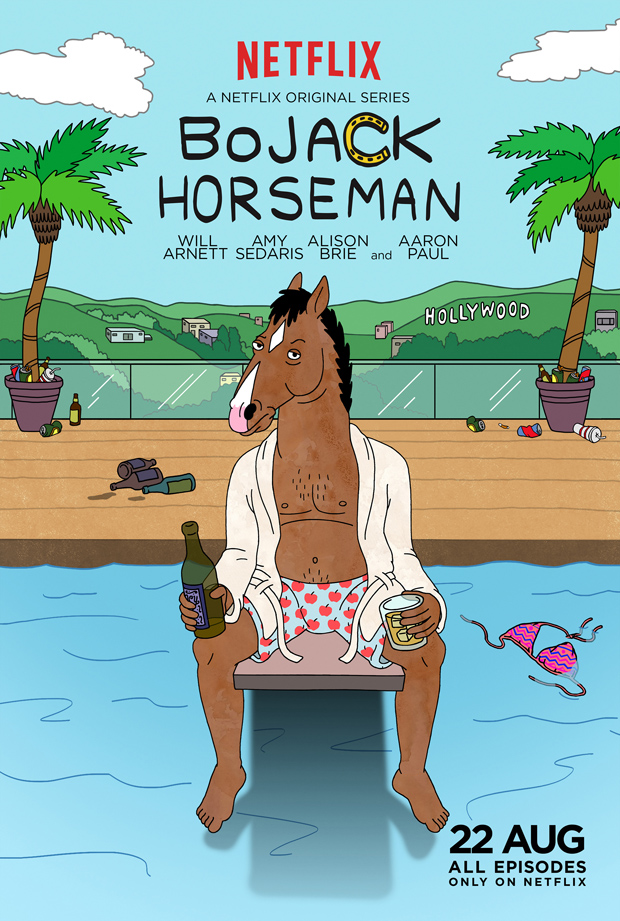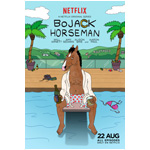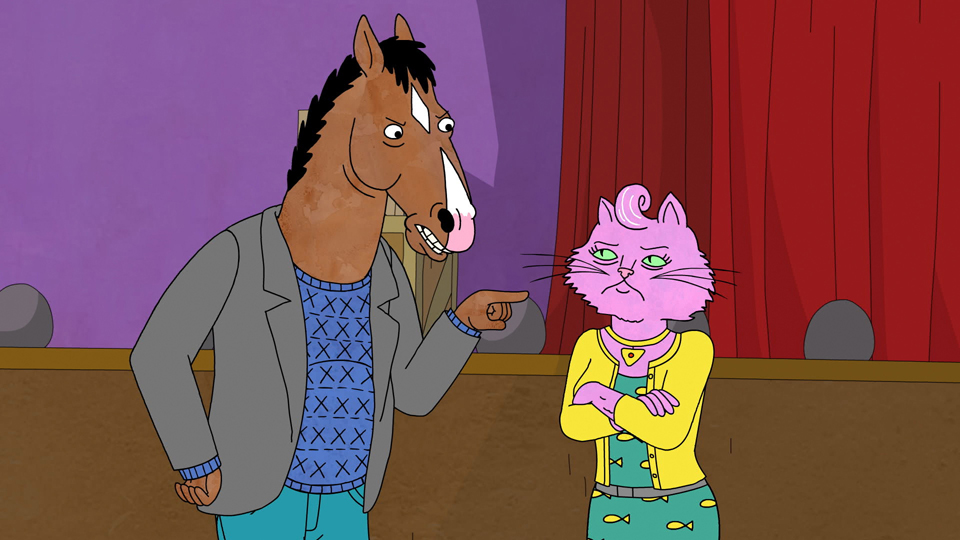
Netflix gets animated with BoJack Horseman, a comic take on a washed-up former sitcom star that is the streaming service’s first original toon for adults.
Raphael Bob-Waksberg has a love-hate relationship with the classic sitcoms like Growing Pains, Family Matters and Full House that he watched growing up.
“I really do love them while also recognizing that maybe they’re not good as pieces of art,” says Bob-Waksberg. “But I do think there’s something wonderful about the comfort foodiness of them and this idea that you do have this family that you return to every week and you know that everything’s going to be all right. There’s something magical about that and at the same time also cynical and gross. I find them very interesting.”
All of which makes it an ideal background for BoJack Horseman, which Bob-Waksberg created as Netflix’s first original animated series for adults.
The series features Will Arnett as the voice of BoJack Horseman, half-human and half-horse star of the hit 1990s family sitcom Horsin’ Around. Long past his prime, BoJack muddles his way through the life of a D-list celebrity in Hollywood, partaking in not-so-healthy doses of depression, self-loathing, alcohol and failed relationships. The show — set to premiere all 12 episodes Aug. 22 on Netflix — also features the voice of Breaking Bad star Aaron Paul as Todd, BoJack’s human sidekick; Amy Sedaris as Princess Carolyn, BoJack’s agent and ex-girlfriend; and Paul F. Tompkins as Mr. Peanutbutter, a half-dog actor who is much happier leading a life that echoes BoJack’s in almost every way. Arnett and Paul also are executive producers on the show.
Bob-Waksberg built the show around a horse-man character design created by his friend, comics artist Lisa Hanawalt. “There’s a lot of shows about these gleeful, happy-go-lucky, cheerful characters like Homer Simpson or SpongeBob SquarePants, so I thought it would be a real fun change of pace to do a show about a character who’s really sad and misanthropic and miserable all the time,” he says.
Hanawalt says she thought at first it was too sad an idea for a show, but quickly changed her mind and designed all the characters and the colors for the show.
“BoJack was the easiest character (to design),” she says. “I immediately knew what he dressed like and what his facial expressions were. … The animals in general are the easiest characters for me. The humans are a little more difficult because we’re so attuned to what human faces look like, just the slightest change in the size the eyes or the position of the mouth will alter how we see that character.”
Enter Eisner
Bob-Waksberg pitched the idea to Tornante Animation — former Disney chairman Michael Eisner’s company — which agreed to partner up and help sell the series. When he pitched to Netflix, he tailored the idea to the streaming service’s model and played up the idea of serializing the show.
“You can watch the episodes all together, so you can plant stuff in episode three that pays off in episode eight,” he says. “You know the audience is going to watch all the episodes in order, they’re not going to skip around, so you don’t really have to spend a lot of time reintroducing the characters.”
Produced at ShadowMachine with animation services by Big Star in Korea, the cast came together surprisingly easily. “There’s no other way we got them except we asked them,” says Bob-Waksberg.
Bob-Waksberg says Netflix has been very supportive and hands-off. “It’s always, ‘How can we make this the show more the show you want to make?’ It’s never, ‘It’s too weird for us!'”
That kind of freedom can be a little intimidating, he admits. “It’s scary to think if audiences reject this, I can’t hide behind the old, ‘Oh, I had to water it down for the network,'” he says. “This is really the show I wanted to make and if they don’t like it then they don’t like me! It’s terrifying in the best possible way.”











 Win a Funko X Lilo & Stitch Prize Pack!
Win a Funko X Lilo & Stitch Prize Pack! 


